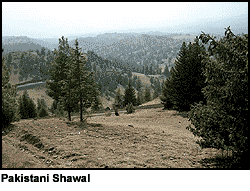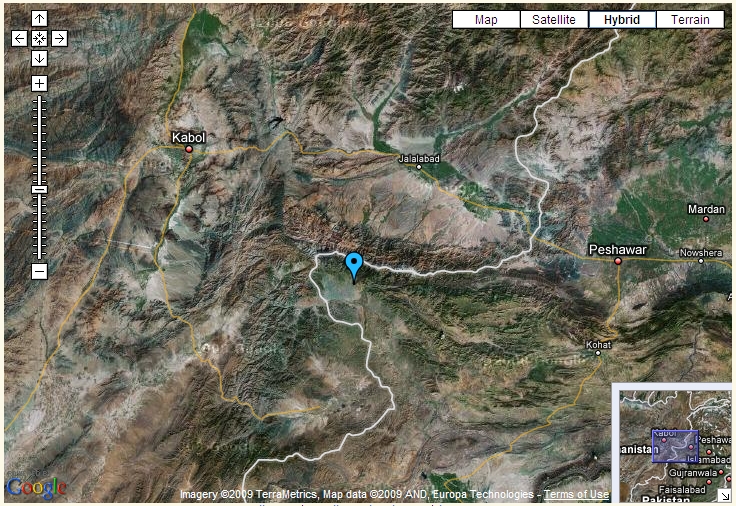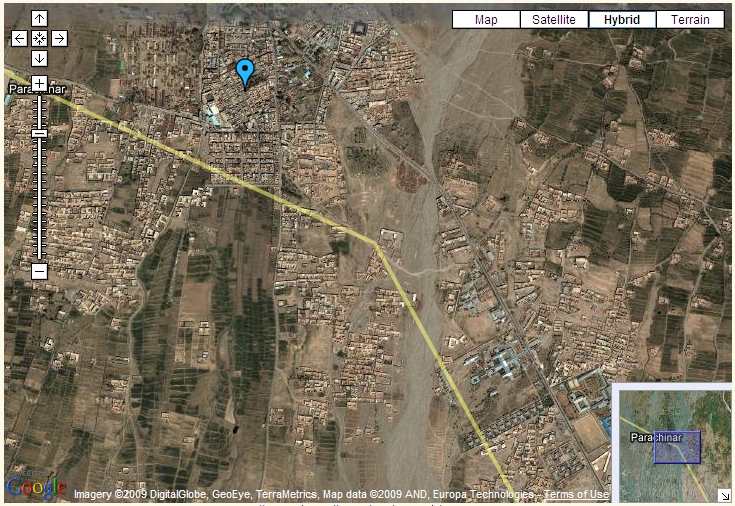So much for the Pakistani military offensive in Waziristan
BY Herschel SmithAs we discussed in Pakistan Crumbles, the Pakistan Taliban have melted away into the mountains of the Hindu Kush in the face of the Pakistani military offensive against them. More detail:
… there are those in the diplomatic circles of Islamabad who say the Pakistani military leadership would soon realize that the troops in South Waziristan are actually chasing shadows because the TTP militants have simply melted into the vastness of the inhospitable surrounding territory. It appears that the militants in Waziristan, headed by the Pakistani Taliban – the Tehrik-e-Taliban Pakistan – are bent on a long-term insurgency against the security apparatus. Although tough resistance was expected from up to 10,000 well-trained Taliban guerrilla fighters from the mainly ethnic Pashtun Mehsud tribe of South Waziristan, the military operation has been relatively proved easy so far, to the surprise of many. Fighting small rearguard actions, the Taliban deserted their bunkers and posts in the major towns, leaving space for the troops to occupy. An intelligence official overseeing the spying operations in Waziristan has been recently quoted as saying that many groups of Taliban were spotted moving to Shawal, a remote and inaccessible area near the Afghan border. Dense forests and ravines make the Shwal valley in North Waziristan a perfect terrain for a lethal guerrilla war. “Our troops will not enter the area, at least for now. It is a very difficult area”, the intelligence official was further quoted as saying.
Other Taliban fighters have slipped away into at least four other tribal districts – Orakzai, Mohmand, Bajaur and Kurram – where the TTP controls large swaths of territory. “The militants started to shift their kin and cattle, and ammunition to other tribal districts after the government announced an operation in South Waziristan in May”, said the intelligence official on condition of anonymity. However, according to Javed Hussain, the former commander of Pakistan’s elite commando force – Special Services Group (SSG), the force involved in the offensive is too small to block the secondary routes and traditional smuggling channels used by the Taliban to flee. The troops have so far focused on securing the main town along the three main roads and the bases lost to the Taliban in previous encounters during their three-pronged operation, he added. And the Pakistani government maintains that forcing the Taliban militants to flee has been a success, pointing out the rebels have lost dozens of training facilities, including one to groom suicide bombers. But intensified suicide bombings and raids on civilian and sensitive military installations across the country in recent weeks definitely tell a different story. Security experts in Islamabad are of the view that the Taliban militants’ ability to hit at will has not been minimized – over 300 people killed in such attacks in October 2009 bear testimony to this.
Azam Tariq, a Taliban spokesman, has already vowed to orchestrate a long guerrilla war by early next year, after an end to the snowfall that blocks the important passes, making the movement across the mountainous South Waziristan region of around 6,620 square kilometers very difficult. Analysts, therefore, warn that the Taliban strategy could have dangerous consequences for the Pakistani forces as the militants might regroup and return to South Waziristan with more force and make the troops continually bleed with deadly ambushes, raids and roadside bombings. The Taliban circles say the TTP militants are applying the same strategy which they were trained to use by the Pakistani security forces against the Indian army in Jammu & Kashmir during the 1990s. That included a pattern of not confronting a regular army once it was mobilized; rather, the militants dodged it and opened a new front far from the point of the army’s concentration. And much the same has happened in Pakistan over the past month, with a string of deadly suicide bomb attacks in various parts of the country, including in Peshawar, the capital of North-West Frontier Province (NWFP).
The Shawal area is a historical staging point for attacks into Afghanistan, and is considered to be a no-man’s landdue to the terrain and inhospitable conditions.
Under-resourcing the campaign, failing to cut off escape routs, failing to engage in the chase, ceding the rural terrain to the enemy, and under-estimating the longevity of the fight. These are all errors in judgment made by U.S. strategists too.
Yet another bungled attempt to defeat the insurgents … yet another opportunity crashes and burns. So much for the Pakistani military offensive in Waziristan. As a concluding thought, Shawal is just South of Parachinar where it is theorized that UBL resides.
The enemy doesn’t feel threatened in this region, a place right on the Afghanistan – Pakistan border. Does it make any sense to continue to ask the question why we are in Afghanistan?






